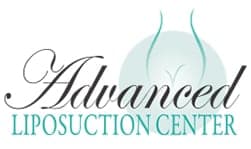Contraindications of PRP

No single medical treatment will work for every patient, every time. Other patients shouldn’t receive certain treatments—they could cause more harm than good. Ethical doctors at reputable facilities will only offer the right treatments to the right patients. The benefits must outweigh the risks. Remember that any doctor’s first oath is “first do no harm.”
In reality, regenerative treatments like Micro-Needling with Platelet Rich Plasma (PRP) are highly safe and effective. Like any good procedure, it can greatly help almost anyone. We will go over the contraindications of PRP.
Contraindications of PRP
It’s not right for everyone, though. Prescribing physicians observe the following guidelines:
- Pregnant patients should wait. Treatment is safe, but it’s technically recommended that mothers wait until after the delivery.
- Patients who scar easily shouldn’t receive this treatment. This is especially true of people who form wide, highly visible keloid scars.
- Those with severe active acne should wait. Treatment can proceed once the breakout is controlled.
- Those with active eczema, rosacea, or several other skin conditions should wait. Again, only once the underlying condition is controlled can proceed.
- Patients with impaired wound healing or impaired circulation should not receive this treatment.
- In medicine, common sense should always apply. Any non-critical treatment can wait if a patient has had recent facial trauma or is recovering from surgery.
Yet every patient is unique. Often it’s just a matter of finishing an acne prescription before starting treatment, for example. The only way to know for certain is to meet with a qualified Regenerative Medicine doctor.
Is PRP therapy covered by insurance?
The coverage of PRP therapy by insurance varies depending on the specific insurance provider and the purpose of the treatment. In general, PRP therapy may not be covered by insurance for certain conditions or when used for cosmetic purposes. However, for certain medical indications supported by clinical evidence, such as tendon injuries or osteoarthritis, some insurance plans may provide coverage. It is important to check with your insurance provider to understand the specific terms of your coverage and whether PRP therapy is eligible for reimbursement in your particular case.
Can PRP therapy be used for cosmetic purposes?
Yes, PRP therapy can be used for cosmetic purposes in certain cases. It is commonly utilized in aesthetic medicine to address various concerns related to skin rejuvenation and hair restoration. The procedure involves extracting a small amount of blood from the patient, processing it to isolate the platelet-rich plasma (PRP), and then injecting or topically applying the PRP to the targeted area.
In cosmetic applications, PRP therapy is often used to stimulate collagen production, improve skin texture and tone, reduce fine lines and wrinkles, and promote hair growth. The growth factors and other bioactive substances present in PRP are believed to enhance tissue regeneration and repair.
PRP therapy can be used for facial rejuvenation, commonly referred to as the “vampire facelift” or “PRP facelift.” It can help improve the appearance of skin quality, promote a more youthful glow, and reduce the signs of aging. Additionally, PRP therapy is used in combination with microneedling or as an adjunct to hair transplant procedures to enhance hair regrowth and thickness.
Is PRP therapy a painful procedure?
PRP therapy is generally well-tolerated by most individuals, and any discomfort experienced during the procedure is typically minimal. The use of a local anesthetic or numbing cream can help minimize any potential pain or discomfort.
